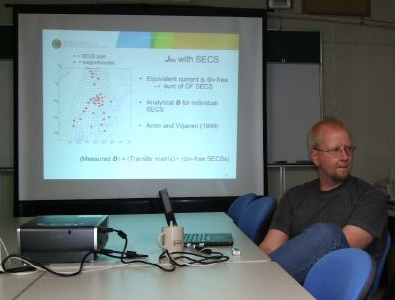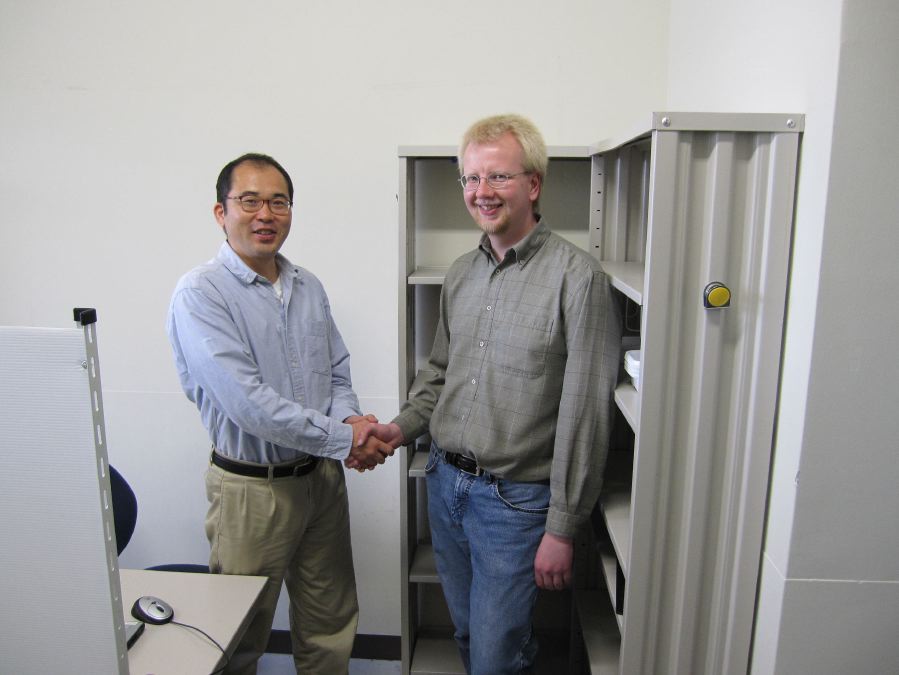|
|
| Heikki Vanhamäki博士(滞在期間 H21.10.15 - H22.4.15) |
研究課題名:
Electrodynamics in the 3D polar ionosphere
3次元極域電離圏内の電磁気学
研究計画概要:電離圏における物理過程の多くは、電離圏を3次元構造として取り扱わないと理解することが困難である。本研究では、電離圏エレクトロダイナミクスにおけるカウリングチャネルの役割と、電離圏下部における電子の降り込み等により作られる余剰電荷の生成と電離圏エレクトロダイナミクスにどのような影響を与えるか、という基本的な二つの未解明課題について、電離圏の磁力線方向の構造も考慮にいれて、より完全に理解することを目指す。方法としては理論的およびEISCATデータ解析両方の手法を用いる。 |

セミナーでの様子。この後、歓迎を開催しました。写真はここ。ヒッキさん、普段は寡黙だが、話せば結構よく話す方です。 |
セミナー(2009年11月6日)@セミナー室
Ionospheric electrodynamics at the auroral zone
Abstract
I give a short summary of my background at the Finnish Meteorological
Institute and about my past and current work. My main research interest
is theoretical modeling of the electrodynamics of auroral ionosphere. I
have concentrated on two themes: 1) Development of new data-analysis techniques
and 2)study of electromagnetic induction in the ionosphere.
I briefly review the spherical elementary current systems (SECS) method
developed by Amm and Viljanen (1999) for calculating ionospheric equivalent
currents from ground magnetic measurements. I also discuss the local KRM
method developed by Vanhamäki et al (2007) for estimating ionospheric electric
field using conductances and ground magnetic measurements as input data.
As the large scale ionospheric current systems change relatively slowly,in
time scales of several minutes or hours, inductive effects are usually
assumed to be negligible. However, during the past ten years, it has been
realized that induction can play an important part in some situations.
Our results indicate that inductive electric fields and currents are locally
important during the most dynamical phenomena (like the westward traveling
surge, WTS), where induction may locally contribute up to 20-30% of the
total ionospheric fields.

2010年4月14日、ついにお別れ。最後に記念写真。翌日の便にて帰国しました。
Back
|
|
|

